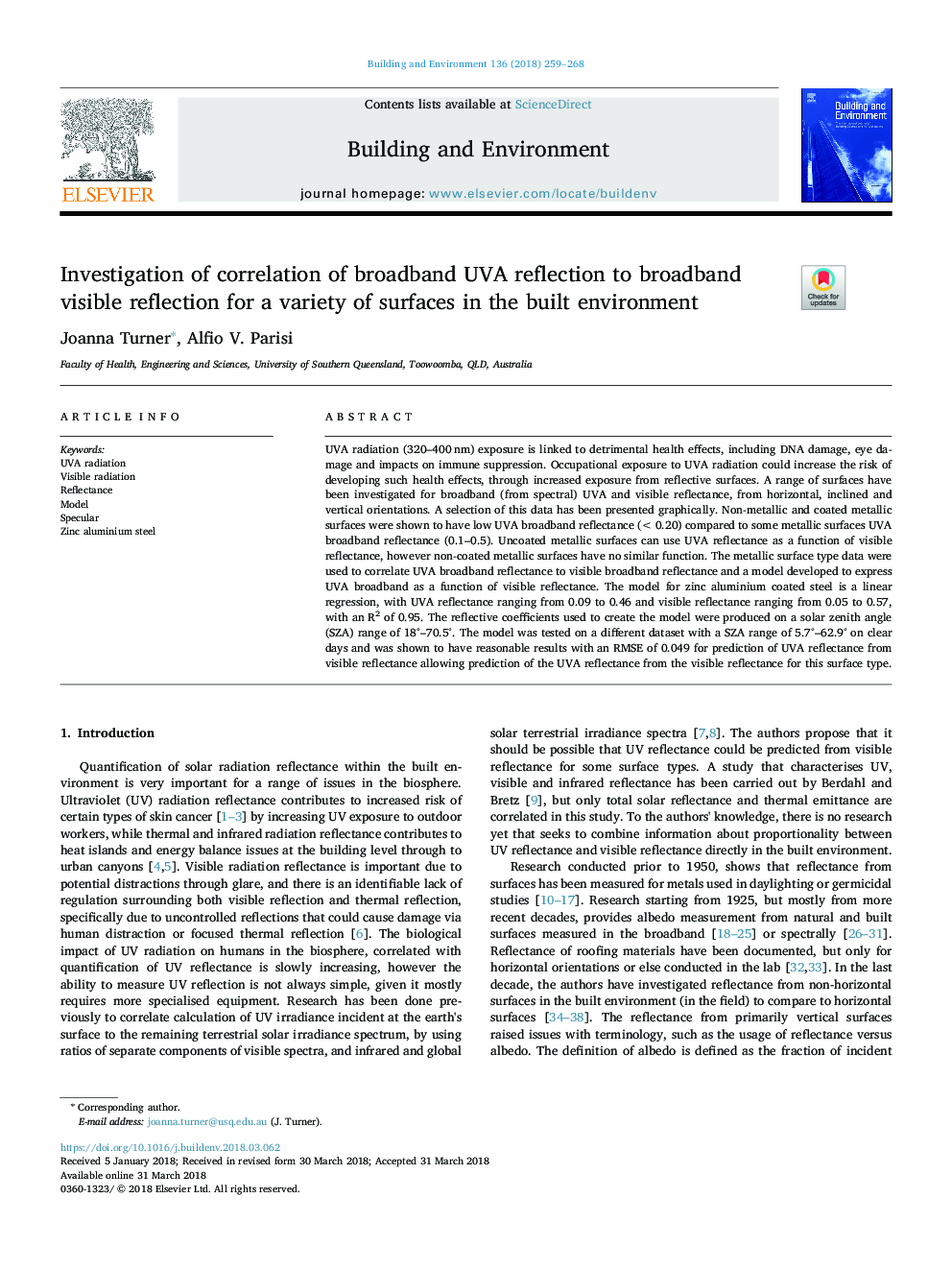| Article ID | Journal | Published Year | Pages | File Type |
|---|---|---|---|---|
| 6697513 | Building and Environment | 2018 | 10 Pages |
Abstract
UVA radiation (320-400â¯nm) exposure is linked to detrimental health effects, including DNA damage, eye damage and impacts on immune suppression. Occupational exposure to UVA radiation could increase the risk of developing such health effects, through increased exposure from reflective surfaces. A range of surfaces have been investigated for broadband (from spectral) UVA and visible reflectance, from horizontal, inclined and vertical orientations. A selection of this data has been presented graphically. Non-metallic and coated metallic surfaces were shown to have low UVA broadband reflectance (<0.20) compared to some metallic surfaces UVA broadband reflectance (0.1-0.5). Uncoated metallic surfaces can use UVA reflectance as a function of visible reflectance, however non-coated metallic surfaces have no similar function. The metallic surface type data were used to correlate UVA broadband reflectance to visible broadband reflectance and a model developed to express UVA broadband as a function of visible reflectance. The model for zinc aluminium coated steel is a linear regression, with UVA reflectance ranging from 0.09 to 0.46 and visible reflectance ranging from 0.05 to 0.57, with an R2 of 0.95. The reflective coefficients used to create the model were produced on a solar zenith angle (SZA) range of 18°-70.5°. The model was tested on a different dataset with a SZA range of 5.7°-62.9° on clear days and was shown to have reasonable results with an RMSE of 0.049 for prediction of UVA reflectance from visible reflectance allowing prediction of the UVA reflectance from the visible reflectance for this surface type.
Related Topics
Physical Sciences and Engineering
Energy
Renewable Energy, Sustainability and the Environment
Authors
Joanna Turner, Alfio V. Parisi,
